Emerging in the 19th century, Impressionism is often considered the first movement of the Modern art era. It reflected the social, political, and economic changes inherent in its time, capturing the world in color and light. People were looking at the world differently, so how that world was reflected in art changed as well. And, through that innovative vision, they lit the spark for today’s modern and contemporary art movements.
Impressionism: A History
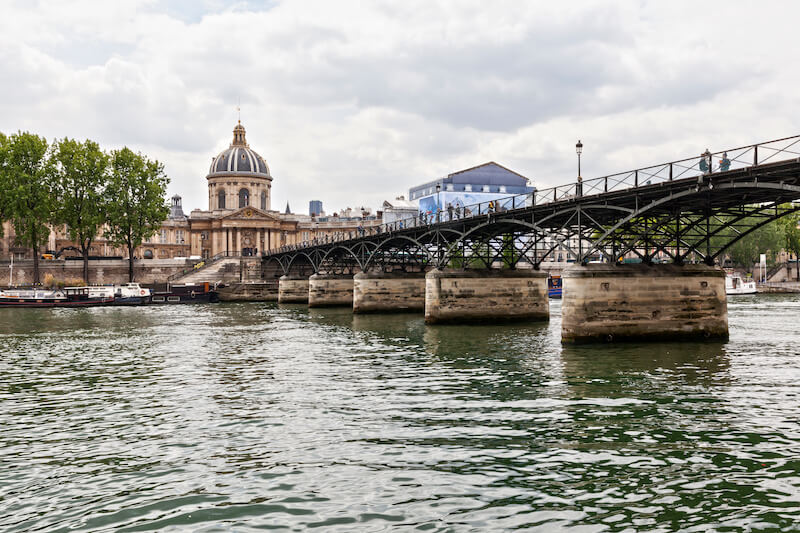
Mid-19th century in Paris was in transition. The French Revolution was a recent memory, the Industrial Revolution had transformed society, and the Age of Enlightenment had encouraged new thinking. The Parisian art world was dominated by the Académie des Beaux-Arts. It held an annual “Salon de Paris” art exhibition, favoring the precise, realistically-painted scenes of the Neoclassical style.
Additionally, Japanese artworks were introduced to Europe around that time. Novel to Europeans, their unfamiliar viewpoints and composition styles, often depicting casual domestic scenes, became massively popular, inspiring art, fashion, and culture. Early photography had also arrived, giving a new lens into day-to-day life.
In the 1850s, feeling constrained by rules, “radicals” began to break from convention, looking to nature for inspiration. They painted what they saw: the movement of shapes and colors in the landscape, mercurial and changing with the light. Pushing away the restrictive precision of previous eras, they combined softly focused subjects with bold brush styles and a vibrant color palette.
The Salon, considering itself the arbiter of “acceptable” art, refused thousands of works by those renegades, finding their abrupt brushwork techniques unfinished and haphazard, and the everyday, plebeian subjects not worthy of consideration.
Furious at the censorship, in 1874 over 50 artists banded together to create an exhibition of their new unconventional style. Included was Claude Monet’s painting “Impression, Sunrise,” which inspired art reviewer Louis Leroy to snidely refer to the group as “Impressionists.”
Key Characteristics of Impressionism
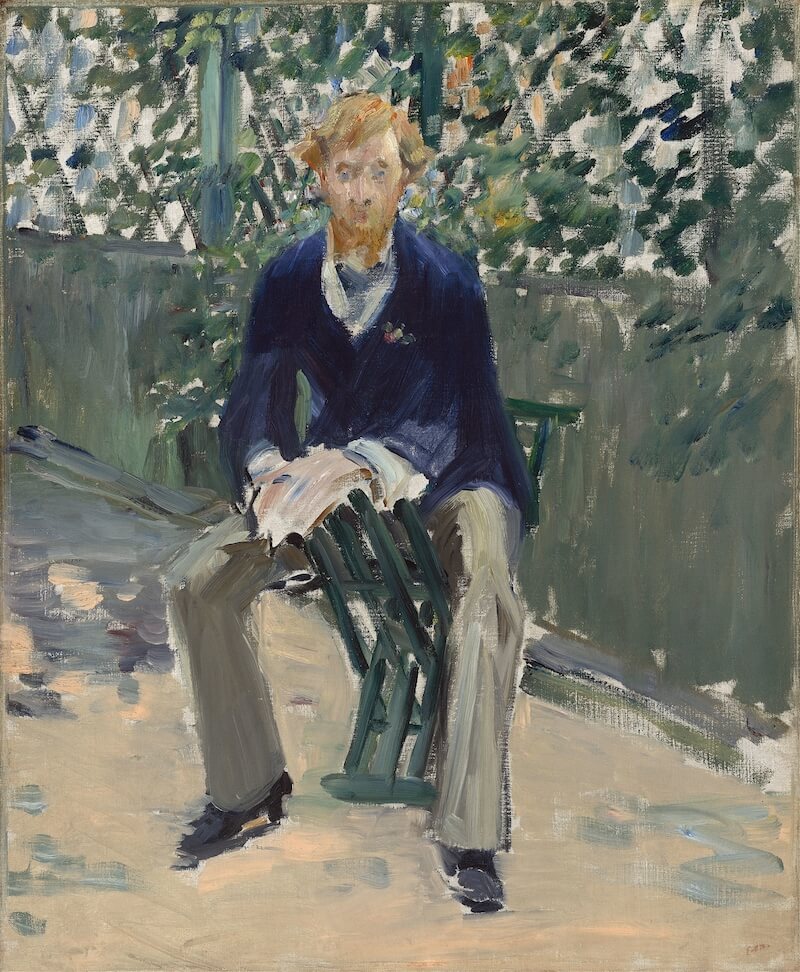
Many critics initially dismissed Impressionism as “feminine” due to the soft painting style and subject matter. Today, some of history’s most famous landscape paintings are of the Impressionist style.
The feminine descriptor was simplistic and inaccurate, but five key techniques and characteristics distinguish the movement.
1. Non-Literal Representation
Instead of lifelike detail, Impressionists worked more abstractly, aiming to capture the emotional essence of a moment and how light, color, and changing vantage points changed the visual story. These visual stories have made abstract wall art so popular.
2. Visible Brushstrokes
Most Impressionists used repeated, quick, short brushstrokes of a single, pure color. The freeform style felt active and engaged, while layers of paint gave the illusion of depth and movement—a stark contrast to the invisible brush technique and flat panels of prior eras.
However, not all Impressionists worked the same way. Some only used visible brushstrokes sparingly, often to minimize objects in the background, highlighting the foreground subject with more precise, detailed brushwork.
3. “En Plein Air” Outdoor Painting
Expansion train routes in the 19th century made it easier for normal Parisians to explore the city’s outskirts and countryside. For the Impressionists, it let them set up their easels in all sorts of locations and observe the light as moved across the landscape. Their quick, short brushstrokes grew out of that need to rapidly capture the whims of the light and weather in real time.
4. Everyday Subject Matter
Parisian café culture also exploded during this time. City corners were bustling, the middle class was emerging, and people had more leisure time on their hands than ever before.
The artists noticed. Rather than painting imaginary pictures from stories, they wanted to showcase what they saw around them in the bright color schemes they saw them in. Gardens, images of family life, social activities with friends, city scenes, and countryside idylls all became favorite subjects. Class didn’t matter either: they painted working fishermen and upper-class social ladies with equal enthusiasm.
5. Light & Color Techniques
The development of manufactured paint tubes and artificial pigments in the 19th century was critical to Impressionism. Pre-packaged tubes gave artists color consistency and easy portability for working outdoors. Innovations in fabric dyes to support burgeoning textile factories also created more vibrant paint colors than previously available.
While transparent tones were rare, pale and pastel colors were common. Therefore, many Impressionists avoided using black, feeling its harshness would overwhelm their softer tones. Instead, they used contrasting or darker hues to create shadows and definition.
Prominent Impressionist Artists
While many artists could be considered Impressionists, six prominent figures stand out above the rest:
Claude Monet
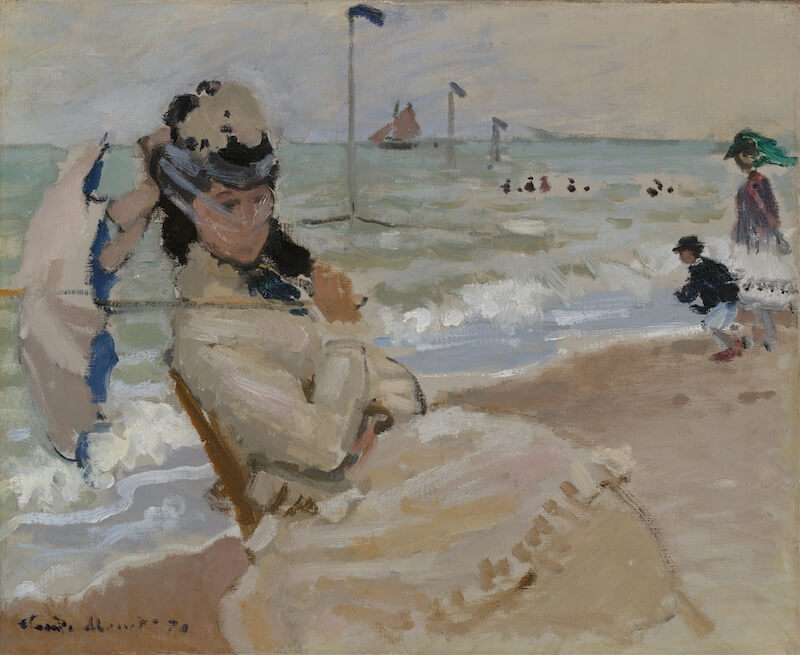
Claude Monet was one of the founders of Impressionism, and arguably the most well known. Born on the Normandy coast, the ocean taught him about the changeability of light and weather, knowledge that later impacted much of his work. Haystacks and cathedrals were favorite subjects, as well as gardens.
Monet often painted series of works highlighting a single motif, each piece varying slightly by the weather or his mood. Indeed, at his Giverny home, the scene of his “Water Lilies” series, he had the garden specifically built “for the pleasure of the eye and also for motifs to paint.”
As age beset him, Monet developed cataracts, his vision becoming clouded. The vibrant colors of his youth became more muted. Frustrated, he had cataract surgery at age 82. As a consequence, Monet could see a level of ultraviolet light most humans cannot, which gave his later works a muted, almost blueish hue.
Pierre-Auguste Renoir
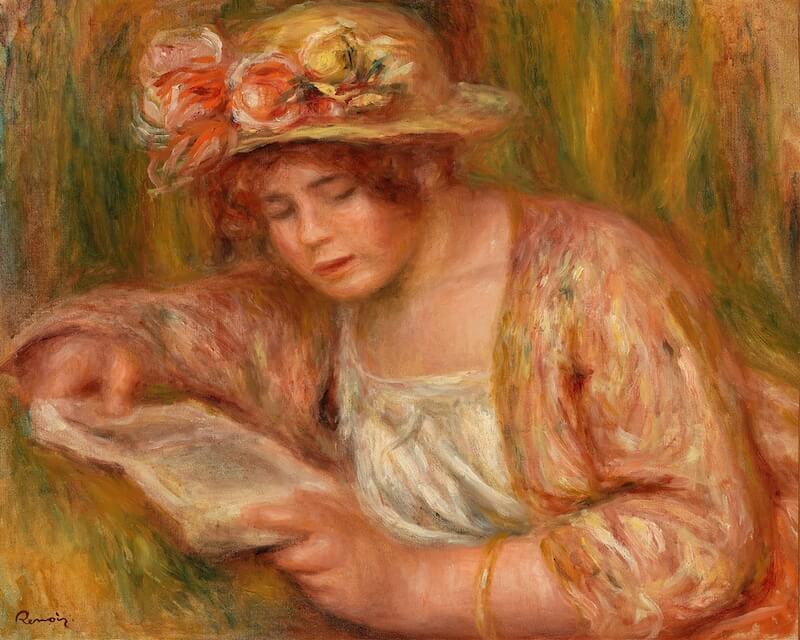
Another of the cohort of early Impressionists, Pierre-Auguste Renoir was one of the pioneers in using the “broken” brushstroke technique. His style developed over time, however, to become more delicate. Renoir was also particularly interested in the play of light, how it changed where it touched someone’s skin, or how ripples of water alter their hue throughout the day,
In later years, wheelchair-bound and hobbled by arthritis, he still insisted on painting with a brush strapped to his hand.
Edgar Degas
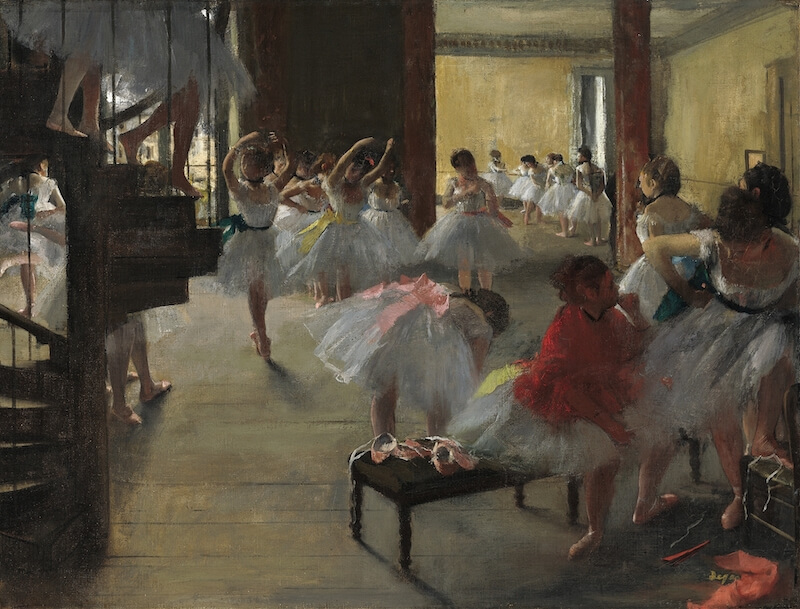
Edgar Degas liked to break the rules. All of them, even the rules of Impressionism: he liked to use black, and his technique was much more focused on structure. Yet, he was a fierce proponent of the movement, and one of its leading artists.
His most well-known works are a series capturing the lives of ballet dancers backstage at the Paris Opera House. Painted between 1870-1874, they gave the public a view of the inner workings of the glamorous opera, but also gave Degas the opportunity to understand how movement and light changed as the dancers moved on and off stage.
An unsympathetic character, bigoted, snobbish and hateful, he nevertheless had friendly relationships with most of his contemporaries. Eventually, though, almost all of his friends tired of his vileness and disassociated from him.
“Les Trois Grandes Dames”
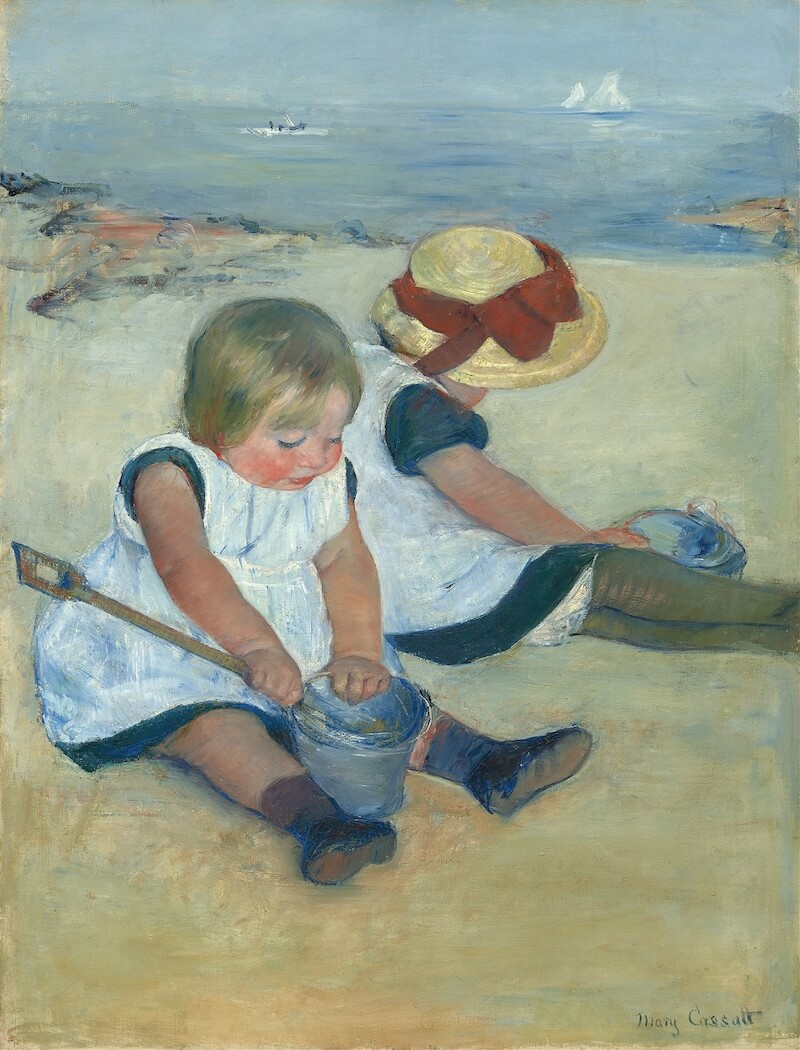
Impressionism was a movement not solely by men, however. In 1928, Mary Cassatt, Berthe Morisot, and Marie Bracquemond were retrospectively named “les trois grandes dames,” or the three great ladies of Impressionism, by renowned art historian Henri Focillon.
While unfair to lump them together simply due to their sex, all three artists brought a uniquely feminine perspective to their painting. At a time where communal standards around female behavior and education were extremely restrictive, the three were avant-garde in their depictions of women in ways that subtly highlighted the social limitations inherent in the era, both in terms of gender and class.
Berthe Morisot, Édouard Manet’s sister-in-law, was the only woman invited to participate in the 1874 exhibition. Known particularly for using color to give depth to the spaces her subjects inhabited, she regularly depicted women (including her daughter, Julie) with mysterious, enigmatic expressions. She’s still recognized for her use of white and its complementary colors.
A friend of Degas’, Mary Cassatt was born in Pennsylvania in 1844, is the only prominent American in Impressionism. She studied throughout Europe, and in 1877 Degas invited her to show her work in Paris. She primarily focused on women’s lives, particularly mothers and daughters, though Cassatt herself proclaimed she was not the marriage or mothering type. Her style, initially vigorous and bold brushwork, morphed over the years to include precise strokes and intricate designs.
Unlike Morisot and Cassat, Marie Bracquemond was not from money. Born into a chaotic working-class household, she never had formal art instruction, studying sporadically where she could. Bracquemond’s use of light developed into a pivotal component in her work, often using a soft palette featuring beige and green hues along with images of idyllic domestic life.
Post-Impressionism: Expansion of the Impressionist Movement
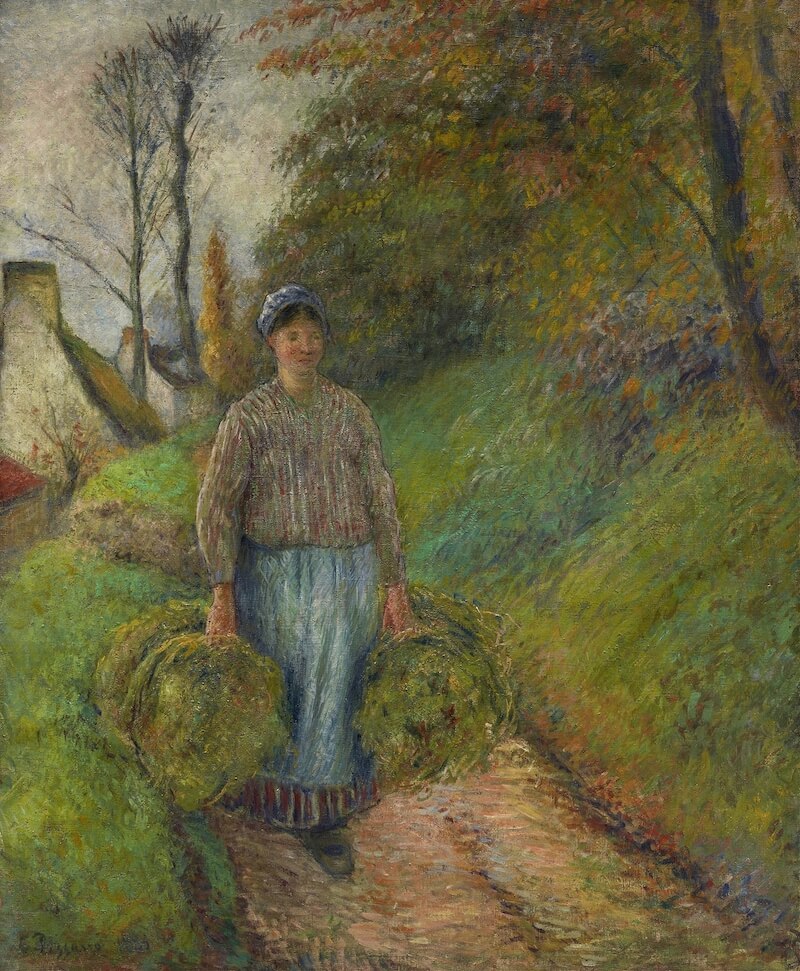
By 1886, Impressionism’s dominance had run its course, and the movement was in flux. The rebellion of the original Impressionists had opened the door for experimentation with even newer techniques and styles.
The Post-Impressionism period both grew out of and in rebellion against Impressionism. Post-Impressionists used stronger shapes and borders in a much more defined composition. To infuse their works with more subtext, they often chose bold, even unnatural colors and surreal, distorted perspectives to create an emotional impact.
The Beginnings of Expressionism, Cubism, and Pointillism
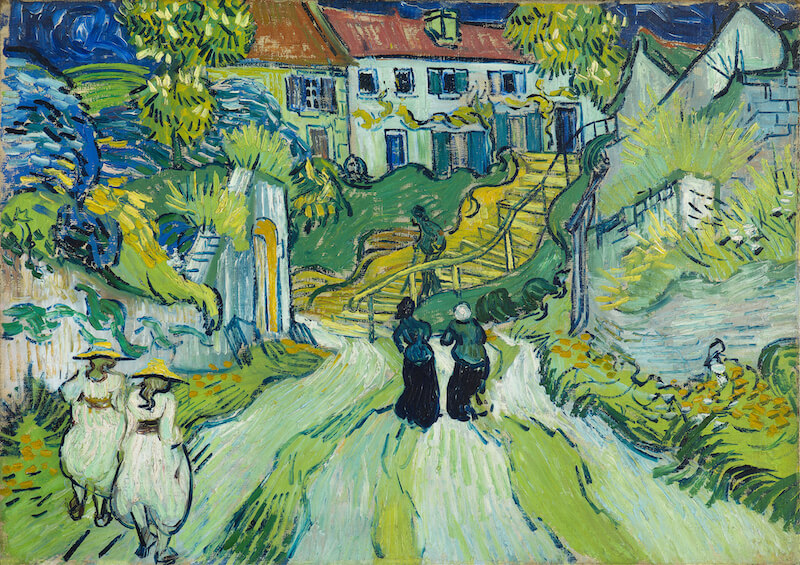
Many Impressionists like Camille Pissarro and Paul Gauguin evolved their techniques over time, those experimental styles helping to stimulate many modern art movements. Paul Cézanne’s controlled brushwork and emphasis on geometric forms, for example, laid the foundation for Cubism.
Similarly, Vincent Van Gogh expanded on his early exposure to Impressionism with even bolder brushstrokes and bright colors. Embracing imperfection and distortion to imbue a scene with emotion, Van Gogh was an early adopter of a style that would become Expressionism. His works are still prevalent in museums and living room decor alike.
Notably, Pointillism minimized the clipped brushstrokes of Impressionism even further, utilizing tiny single-colored dots painted next to each other, the contrasting shades giving shape to the scene. Georges Seurat’s “A Sunday Afternoon on the Island of La Grande Jatte,” later immortalized in Stephen Sondheim’s Sunday in the Park with George, is an iconic example of a large scale Pointillism piece depicting Parisian society relaxing on the banks of the Seine.
The Movement’s Lasting Impression
Few other art movements have had the wide-reaching and long-lasting influence that Impressionism has had, far beyond its original time period and artists. Works by prominent artists of the period still fetch eye-watering sums. In 2019 Monet’s “Meules” sold at Sotheby’s for a whopping $110,747,000. While the legacy of Impressionism is well beyond its value, the demand for pieces of that period demonstrate its enduring appeal.




